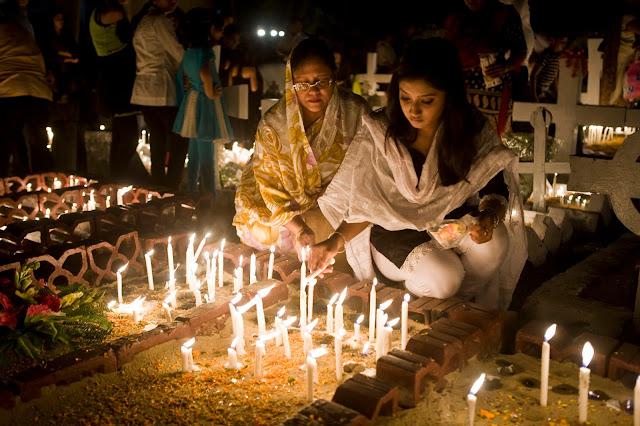Today's Halloween customs are thought to have been influenced by folk customs and beliefs from the Celtic harvest festivals, which have pagan roots, particularly the Gaelic festival Samhain. Although some folklorists have detected its origins in the Roman Feast of Pomona, the goddess of fruits and seeds, or in the festival of the dead called Parentalia, it is still more typically linked to this Celtic festival which comes from the old Irish for "summer's end".
 |
| Vertumnus and Pomona by Peter Paul Rubens, 1617-1619 |
 |
| The Parentalia is the Roman festival for honoring one's dead parents. |
Gaelic calendar and was celebrated in Ireland, Scotland and the Isle of Man.
It was held on about 31 October – 1 November.
Samhain marked the end of the harvest season and beginning of winter, the 'darker half' of the year. It was seen as a liminal time, when the boundary between this world and the Otherworld thinned. This meant the Aos Sí and the 'spirits' or 'fairies', could more easily come into our world and were particularly active.
 |
| Riders of the Sidhe by John Duncan - The kings and queens of the fairies |
 |
| Photo Amanda Cutler, see more HERE |
The souls of the dead were also said to revisit their homes seeking hospitality. Places were set at the dinner table and by the fire to welcome them. The belief that the souls of the dead return home on one night of the year seems to have ancient origins and is found in many cultures throughout the world.
Special bonfires were lit and there were rituals involving them. Their flames, smoke and ashes were deemed to have protective and cleansing powers, and were also used for divination. It is suggested that the fires were a kind of imitative or sympathetic magic – they mimicked the Sun, helping the "powers of growth" and holding back the decay and darkness of winter.
From at least the 16th century, the festival included mumming and guising in Ireland, Scotland, the Isle of Man and Wales.This involved people going house-to-house in costume (or in disguise), usually reciting verses or songs in exchange for food. It may have originally been a tradition whereby people impersonated the Aos Sí, or the souls of the dead, and received offerings on their behalf. Impersonating these beings, or wearing a disguise, was also believed to protect oneself from them.
The "traditional illumination for guisers or pranksters abroad on the night in some places was provided by turnips or mangel wurzels, hollowed out to act as lanterns and often carved with grotesque faces". By those who made them, the lanterns were variously said to represent the spirits, or were used to ward off evil spirits.
What ever the Halloween means to you have a happy one!
Happy Samhain!








.jpg)












